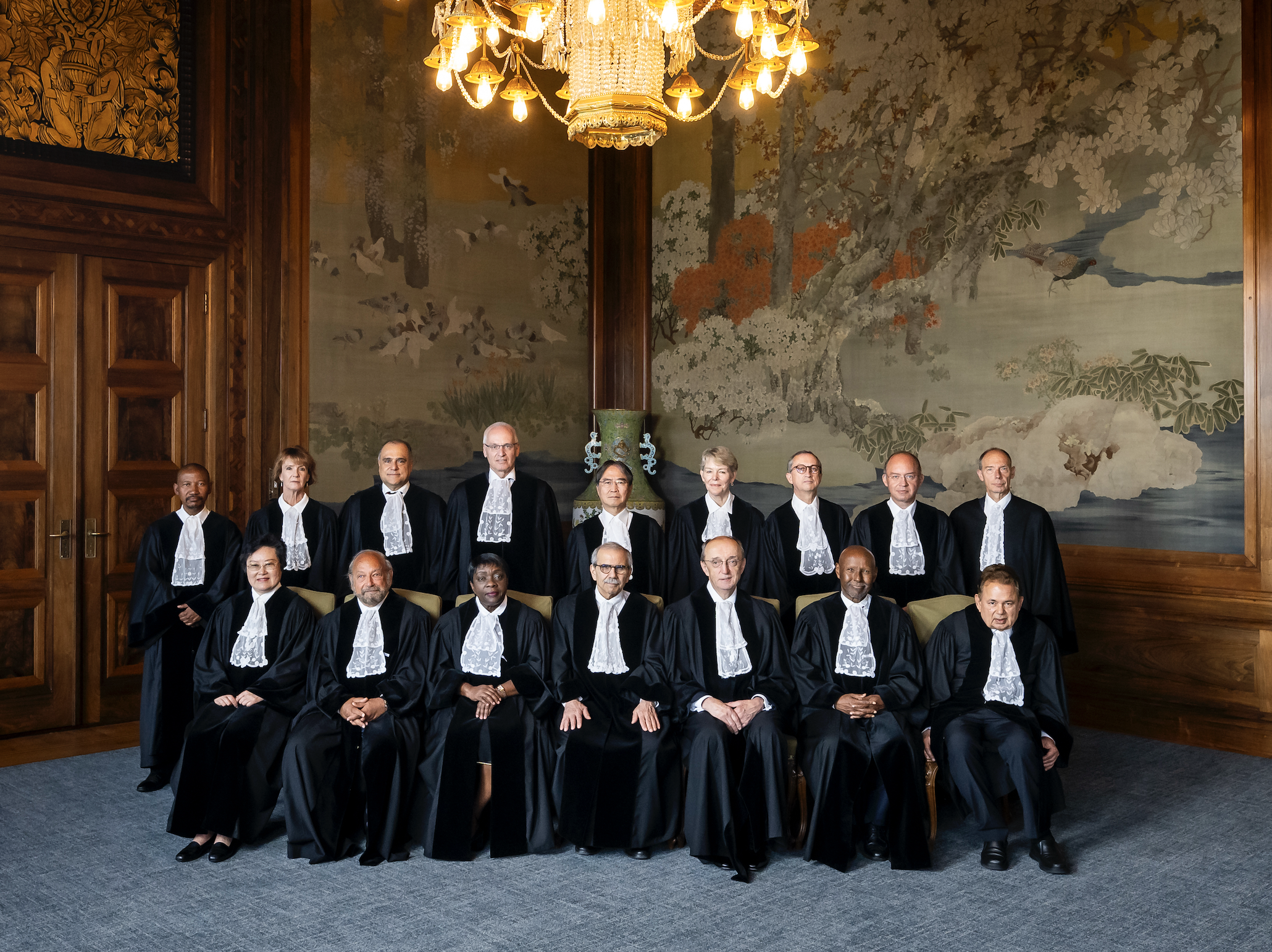Contemporary debates on reparations and climate justice often remain siloed, addressing either historical injustices such as slavery and genocide or emerging crises like climate-induced displacement, food and water insecurity, and disproportionate exposure of marginalised communities to extreme weather events. Against this siloing, we advocate for a framework that enables a rethinking of reparations and climate vulnerability as mutually constitutive outcomes of colonial violence.
To advance this claim, we draw on Robert Meister’s theory of reparations as a reversal of accumulated and inherited gains, shifting the legal and moral emphasis from proving loss to identifying unjust enrichment. This is particularly vital for regions where historical harms are complex, layered, and often re-entrenched through overlapping imperial legacies. Meister’s approach allows us to hold together the dual harms of Indigenous genocide and plantation slavery without resorting to hierarchies of suffering–a unifying rather than a divisive reparative frame.
These tensions surrounding Caribbean reparations claims gained new urgency with the International Court of Justice’s (ICJ) 2025 advisory opinion on climate change. While the opinion marked historic progress in affirming states’ stringent obligations to protect the climate system and recognizing that breaches give rise to full reparation, it fell short of its transformative potential in its treatment of the doctrine of specially affected states – a doctrine established in the North Sea Continental Shelf case and echoed in the law of State responsibility. Though the Court acknowledged that certain states face disproportionate harm, it concluded that this does not create differentiated legal consequences under state responsibility rules—a formal equality that, as critiqued by Vice-President Sebutinde and other judges, risks obscuring the structural dimensions of climate injustice rooted in colonial histories.
This blog post points toward a reparative horizon grounded not merely in legal redress but in the possibility of ‘ecological civilization’–a vision of post-imperial justice that reconceives of the relationship between historical wrongs, ecological entanglements, and the planetary future.
The Entry Point of Caribbean Genocide Reparations
Few regions exemplify the interlinking of historical injustice and ecological vulnerability as vividly as the Caribbean. While regional reparation claims have long focused on the Trans-Atlantic slave trade, the most recent wave–expressed through the ten-point plan approved by the Caribbean Community (‘CARICOM’) in 2014 – also identifies the genocide of Indigenous peoples as a harm requiring redress. However, this inclusion raises several questions.
First, indigeneity in the Caribbean is a complicated question, given the region’s demographic legacy of African enslavement and mixed ancestries. This contrasts with settler-colonial contexts that often shape dominant understandings of reparations for Indigenous genocide. Relatedly, given that Caribbean history is often imagined through the lens of plantation slavery and imperial rivalries, histories of the initial Spanish colonization–and destruction of Indigenous communities–are prone to being obscured. This issue is compounded by the fact that Spain, even relative to other former imperial powers in Europe, continues to exhibit a marked reluctance to acknowledge and redress past colonial wrongs.
CARICOM’s inclusion of Indigenous genocide also sits uneasily with some member’s poor records on Indigenous land rights, notably in Belize, Guyana, and Suriname. This raises a core tension: how can a state seek reparations for historical injustices when it is actively exacerbating the legacies of said injustices?
Rather than viewing these tensions as undermining the Caribbean case for reparations, we argue that this tension calls for conceptual innovation. The construct of ‘genocide-enabled domination’ centers the co-constitution of Indigenous dispossession and African enslavement as foundational to Caribbean extractive regimes. The initial destruction of Indigenous societies–often through patterns of labour demand–was integral to the plantation economies that fuelled the Trans-Atlantic slave trade. In other words, when envisioning the Caribbean, the dispossession of land and the dispossession of bodies existed in an irreducibly relational capacity, collectively forming a singular subject to which reparations are owed.
This framing foregrounds the specificities of Caribbean geographies, where land-ocean continuities challenge international law’s default territorial presumptions and call for serious engagement with questions of place-making. In the Caribbean, place emerges through the entanglement of land and sea–an entanglement that historically underpinned plantation economies, transoceanic trade, and the centrality of the region to global capitalism and slavery. These dynamics strengthen the reparations claim by situating colonial dispossession within the ecological realities that continue to shape Caribbean futures.
Climate Coloniality and the Ethics of Repair: Unjust Enrichment, Climate Reparations, and the Afterlife of Colonial Violence
The framework of ‘genocide-enabled domination’ becomes even more urgent in light of what is now termed the coloniality of climate change. Formerly colonized states are disproportionately climate-vulnerable–a structural injustice inseparable from the Global North’s historical exploitation of the Global South. Colonialism and slavery not only enriched imperial powers–fuelling the Industrial Revolution and, excess greenhouse gas (GHG) emissions–but also established an extractivist global economic model from the Global South. This model, sometimes described as the ‘Plantationocene,’ continues to exacerbate environmental degradation and inequality. Postcolonial states, already disadvantaged by the impoverishment and ecological destruction wrought by colonial rule, remain vulnerable owing to persistent neocolonial dynamics, whereby former imperial powers and global institutions continue to influence their economies, governance, and resource management, often constraining their sovereignty and reinforcing dependency. These conditions shape postcolonial states’ disproportionate exposure to climate risk despite their minimal contributions to the crisis. Few regions make these linkages between past domination and present climate vulnerability more visible than the Caribbean.
It is here that Meister’s framework proves particularly powerful. Focusing on reversing unjust enrichment rather than compensating for quantifiable loss, Meister’s model advances reparations not through direct causation, but through an ethical obligation to reverse the accumulated and inherited maintenance of unjust gains. This avoids the evidentiary burden that often undermines loss-based claims.
Importantly, Meister’s framework navigates the inter-imperial rivalries that defined Caribbean colonization–from Spanish conquests to subsequent British, Dutch, and French plantation regimes. By foregrounding the enrichment of beneficiaries rather than the suffering of victims, it avoids reproducing harm-hierarchies–an issue that is especially pressing given genocide’s dominant perceived moral status as the ‘crime of crimes’. The framework instead enables a collective reparative orientation toward shared structures of domination.
Meister’s construct has far-reaching implications when linkages are drawn to climate reparations. If colonial wealth accumulation enabled industrial emissions, then contemporary climate vulnerability itself must be understood as an extension of colonial violence. This insight supports growing calls for Loss and Damage financing to hold high-emitting states accountable for the disproportionate destruction endured by postcolonial nations. A reparative framework grounded in ‘genocide-enabled domination’ thus confronts historical injustices while opening pathways for addressing present and future planetary crises, linking accountability with the imaginative construction of a post-extractive, post-imperial future.
From Theory to Practice: The ICJ Advisory Opinion and the Marginalization of Specially Affected States
Bridging Frameworks: Why Legal Mechanisms Matter
The reparative framework outlined above remains incomplete without institutional mechanisms capable of translating ethical claims into enforceable legal obligations. This is particularly urgent for the Caribbean, where climate vulnerability is inseparable from colonial extraction. The practical question thus becomes: how can international law recognize not merely that harm has occurred, but that certain states occupy a structurally differentiated position–simultaneously as minimal contributors to climate change and maximal bearers of its consequences?
The ICJ’s 2025 advisory Opinion represented a critical juncture in this endeavour. Requested by the United Nations General Assembly through resolution A/RES/77/276, the opinion was positioned to clarify states’ legal obligations toward climate-vulnerable nations, with explicit attention to ‘Small Island Developing States, which due to their geographical circumstances and level of development, are injured or specially affected by or particularly vulnerable to the adverse effects of climate change.’(Separate Opinion of Vice-President Sebutinde, para 4).
Yet, despite this framing, the Court’s reasoning fell short of its transformative potential. Though it address the doctrine of specially affected states (SAS), it concluded that ‘the application of the rules on state responsibility under customary international law does not differ depending on the category or status of an injured state’ [ICJ, AO, para 109]. This approach, while acknowledging factual differentiation, declined to translate that acknowledgment into differentiated legal consequences–missing a critical opportunity to center the voices, experiences, and enhanced legal standing of those most harmed by climate coloniality.
Specially Affected, Formally Equal: The Court’s Cautious Evasion
When addressing the meaning of the General Assembly’s (GA) reference to the states that are ‘specially affected’ or ‘particularly vulnerably’ the Court’s reasoning revealed profound limitations. The Court acknowledged that certain states, particularly SIDS, ‘have faced and are likely to face greater levels of climate change-related harm owing to their geographical circumstances and level of development’[ICJ, AO, para 110]. However, it concluded that ‘the application of the rules on state responsibility under customary international law does not differ depending on the category or status of an injured state’ [ICJ AO, para 109]–adding that such states are ‘in principle entitled to same remedies as other injured states’ [ICJ, AO, para 109].
This framing treats differentiated harm as a factual reality without corresponding legal reality. As Vice-President Sebutinde observed, this approach downplays ‘the fact that climate justice is at the heart of the GA’s present request’ [para 5]. She noted that the Court failed to adequately recognize ‘the imbalance between the major polluters and the majority of states whose GHG emissions are negligible’ [para 5].
Judge Yusuf stressed that the Court missed a ‘historic opportunity’ to clearly distinguish between states that caused the climate crisis and those particularly vulnerable to it, noting that ‘this distinction cannot be set aside’, as it appears in the GA resolution, climate treaties, and is supported by science. He argued that the Court failed to provide the international community with the right ‘legal tools,’ [para 19] fundamentally undermining ‘the legal relevance of the advisory opinion, as well as its practical significance for those who have suffered most’ [para 36].
While the ICJ recognized the doctrine of specially affected states in its discussion of remedies, it stopped short of exploring how this doctrine–established in its own jurisprudence–might inform questions of enhanced legal standing, procedural rights in norm-formation, or the interpretation of climate obligations beyond the framework of formal equality in remedies. Moreover, the Court’s, treatment of remedies remained abstract–identifying categories of reparations without elaborating on what forms they might take in practice. As Vice-President Sebutinde noted, the Court could have included ‘innovative remedial measures’ [para 12], appropriate to affected states’ circumstances. The absence of such specificity limits the opinion’s practical utility for states seeking concrete pathways to redress.
The Doctrine of Specially Affected States: From Acknowledgment to Operationalization
The doctrine of specially affected states (SAS), articulated in the North Sea Continental Shelf case (1969), recognizes that states particularly impacted by a legal issue may possess heightened normative weight in shaping customary international law. While the Court acknowledged this principle’s relevance, its engagement remained limited to acknowledging factual differentiation without extending this recognition to procedural or substantive legal consequences.
This principle directly operationalizes the framework of genocide-enabled domination. Just as the Caribbean’s current vulnerability stems from centuries of extractive violence–Indigenous dispossession enabling plantation slavery enabling industrial capitalism–so too does its ‘special affectedness’ reflect a particular structural position within global climate justice. The doctrine could have provided a vehicle for recognizing the Caribbean’s relationship to climate harm is not incidental but constitutive: shaped by the same colonial patterns that now produce disproportionate exposure to rising seas, hurricanes, and ecological collapse.
This connection becomes all the more urgent when considering Vice-President Sebutinde’s critique that the Court glossed over obligations owed to ‘present and future generations’ [para 7]. She stressed that states bear responsibilities not merely to other states but to distinct communities– ‘peoples’–whose ‘habitat and way of life is adversely affected by the effects of climate change’ [para 6]. This includes ‘the indigenous peoples of many Small Island States whose very existence and way of life is threatened by rising sea levels and disappearing territory’ [para 6]. In the Caribbean context, Indigenous communities –though demographically small– maintain vital cultural and territorial claims, while Afro-Caribbean populations bear the intergenerational inheritance of enslavement. The Court’s limited engagement with peoples and generations thus risks a double erasure.
Furthermore, the International Law Commission’s Articles on the Responsibility of States for Internationally Wrongful Acts (ARSIWA, 2001) explicitly reference this concept. Crucially, Article 42 stipulates that a state is entitled to invoke responsibility if it is ‘specially affected’ by a breach, even if the obligation was not owed exclusively to it. In the climate context–where harm is collective, causality cumulative, and vulnerability asymmetrically distributed–this provision is especially significant. It could empower climate-vulnerable states to claim not merely that they are harmed, but that they possess particular legal standing to demand accountability and systemic change.
Why This Matters for the Caribbean
For Caribbean states pursuing reparation grounded in genocide-enabled domination, the SAS doctrine would have provided crucial legal architecture. It would have allowed the Court to move beyond treating all injured states as formally equivalent, toward recognizing that the Caribbean’s vulnerability represents a distinctive form of legal injury–one rooted in historical dispossession and ongoing structural disadvantage.
Such recognition matters both procedurally and substantively. Procedurally, specially affected status could provide Caribbean states with enhanced standing to influence how climate obligations are interpreted–extending beyond existing frameworks like CARICOM’s ten-point plan to shape customary international law formation and treaty application. Substantively, it could inform how Paris Agreement obligations regarding finance, technology transfer, and loss and damage are implemented based on historical responsibility and current vulnerability. Vice-President Sebutinde rightly criticized the Court for reducing the principle of Common But Differentiated Responsibilities and Respective Capabilities (CBDR-RC) merely to ‘equity’ [para 9], arguing that the operative paragraph should have explicitly required Annex I states to ‘take the lead in combating climate change’ [paras 10, 11].
Concluding Remarks: The Path Forward and the Reparative Horizon
The ICJ’s 2025 advisory opinion represents both progress and paradox. The Court acknowledged that SIDS face disproportionate harm yet refused to translate this acknowledgment of structural inequality into differentiated legal consequences. This gap between recognition and operationalization is the critical limitation.
The ICJ’s approach reflects legitimate concerns – maintaining sovereign equality and avoiding precedents that might fragment the international legal order. Yet these concerns led to a problematic conclusion: recognizing that SIDS ‘have faced and are likely to face greater levels of climate change-related harm’ while determining that state responsibility rules ‘do not differ depending on the category or status of an injured state.’ This maintains formal equality in remedies despite acknowledging factual inequality– a stance that, as Judge Yusuf observed, risks what Anatole France called ‘majestic equality’: laws that forbid rich and poor alike from sleeping under bridges [para 8].
For the Caribbean, where climate vulnerability stems directly from genocide-enabled domination, such formal equality reproduces colonial erasure. Nevertheless, the opinion provides important foundations: stringent due diligence obligations, recognition of obligations erga omnes, and confirmation that climate obligations exist under both treaty and customary law. These foundations remain incomplete without mechanisms for centering those most harmed.
For Caribbean reparations claims, the path forward requires insisting on the relevance of specially affected states doctrine in future proceedings—whether contentious cases, advisory opinions, or treaty negotiations. It requires demonstrating how this doctrine, combined with the principle of CBDR-RC can give legal force to the realities of genocide-enabled domination. Meister’s framework of reversing unjust enrichment offers an alternative pathway: shifting focus from proving loss to identifying beneficiaries–apt for addressing the intergenerational nature of both colonial violence and climate harm. The reparative horizon envisioned is ultimately civilizational, calling for reimagining humanity’s relationship to land, sea, and atmosphere. International law, therefore, must evolve to recognize that climate justice without reparations for historical wrongs reproduces the structures it claims to remedy.






